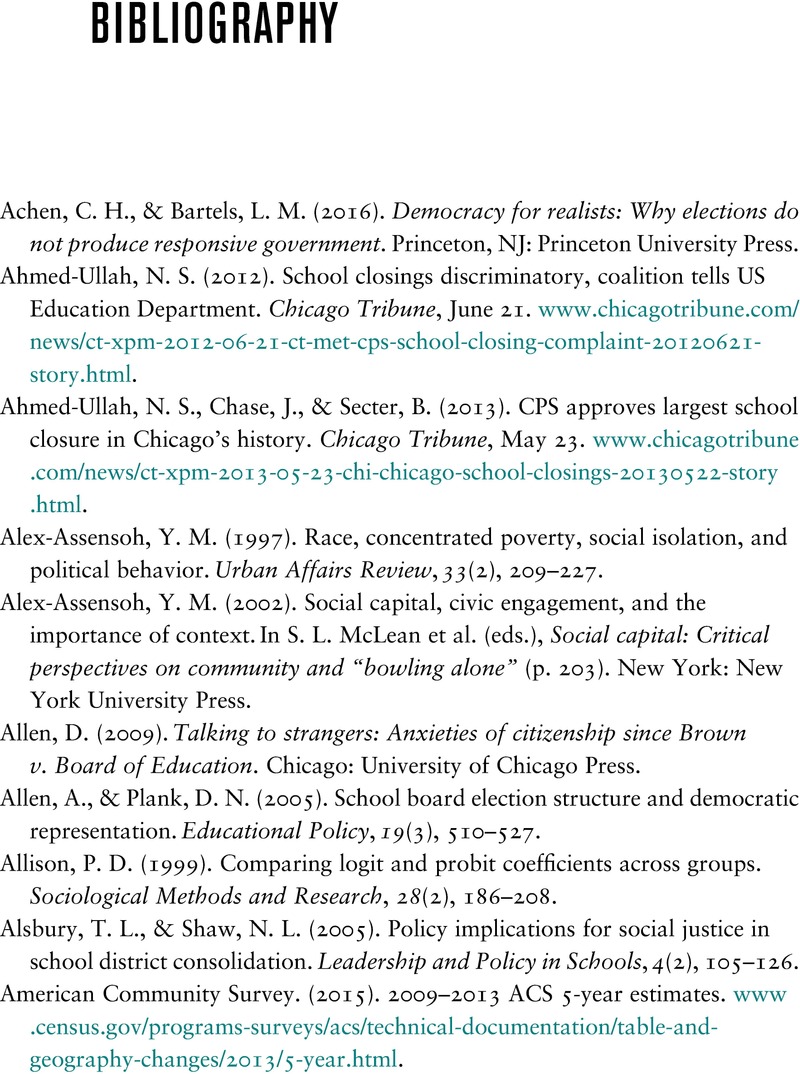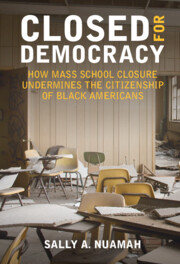Book contents
- Closed for Democracy
- Closed for Democracy
- Copyright page
- Epigraph
- Contents
- Figures
- Tables
- Acknowledgments
- Introduction: Closed for School, Open for Business
- 1 What Targeted Citizens Think
- 2 Who Targeted Citizens Blame
- 3 How Targeted Citizens Fight Back
- 4 Who Wins and Who Loses in the Era of Mass School Closures
- Conclusion: Closed for School, Closed for Democracy
- Epilogue: Close to Home
- Appendix
- Bibliography
- Index
- References
Bibliography
Published online by Cambridge University Press: 11 March 2023
- Closed for Democracy
- Closed for Democracy
- Copyright page
- Epigraph
- Contents
- Figures
- Tables
- Acknowledgments
- Introduction: Closed for School, Open for Business
- 1 What Targeted Citizens Think
- 2 Who Targeted Citizens Blame
- 3 How Targeted Citizens Fight Back
- 4 Who Wins and Who Loses in the Era of Mass School Closures
- Conclusion: Closed for School, Closed for Democracy
- Epilogue: Close to Home
- Appendix
- Bibliography
- Index
- References
Summary

- Type
- Chapter
- Information
- Closed for DemocracyHow Mass School Closure Undermines the Citizenship of Black Americans, pp. 194 - 208Publisher: Cambridge University PressPrint publication year: 2022



